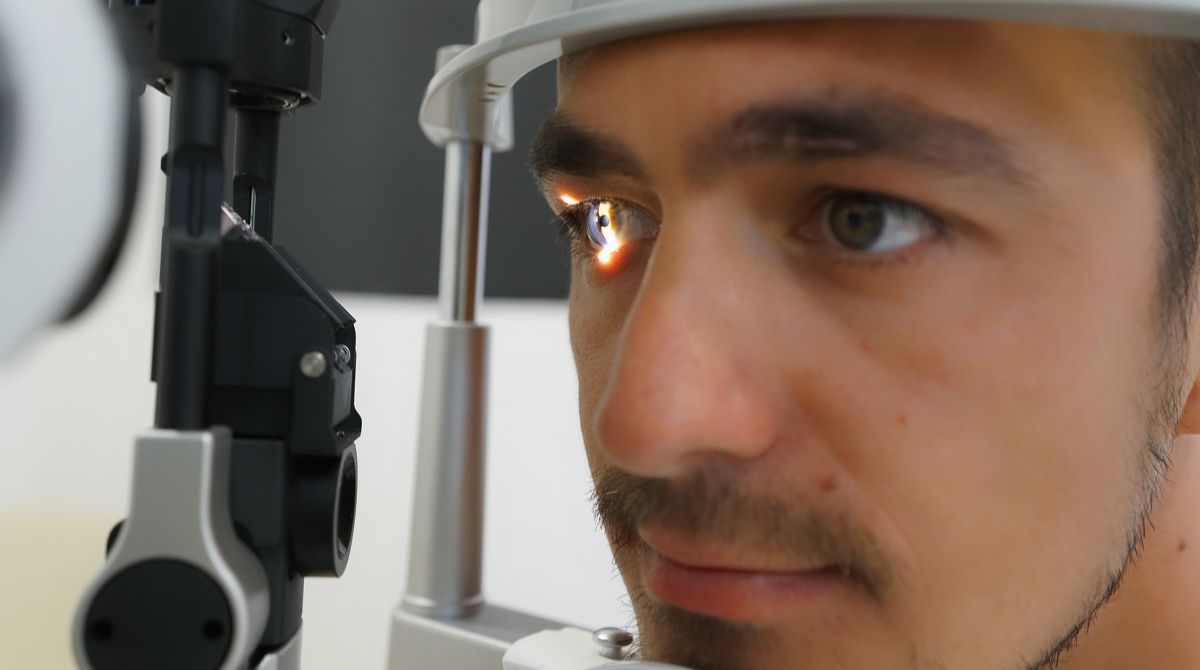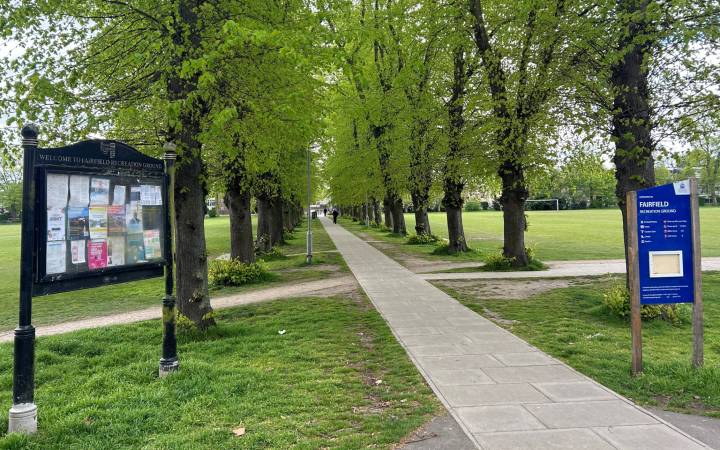Delaying annual eye screen for low risk diabetics could lead to treatment delays and sight loss, according to research involving Kingston University
Posted Tuesday 31 October 2023
 Research found extending the annual screen to two years for people in England considered at low risk of diabetic eye disease could lead to critical treatment delays and sight loss.
Research found extending the annual screen to two years for people in England considered at low risk of diabetic eye disease could lead to critical treatment delays and sight loss.
Extending the annual screen to two years for people in England considered at low risk of diabetic eye disease could lead to critical treatment delays and sight loss, according to research led by St George's, University of London and Moorfields Eye Hospital NHS Foundation Trust and involving Kingston University researchers and academics.
The study, published in the British Journal of Ophthalmology, found that a two-yearly screen delayed hospital referral by 12 months in half of those who developed serious diabetic eye disease, with those at either end of the age spectrum and of Black ethnicity most at risk.
Diabetic eye disease is when the delicate network of tiny blood vessels at the back of the eye becomes damaged, and early treatment is vital to stave off blindness. The NHS introduced an eye screen (DESP) in 2003 for people in England with types 1 or 2 diabetes from the age of 12 onwards, with the aim of picking up diabetic eye disease.
Since 2016, the UK National Screening Committee has recommended annual eye checks for those at high risk of sight loss, and two-yearly checks for those considered to be at low risk.
This is now being implemented in England and the team, including contributions from Kingston University's Professor of Computer Vision Sarah Barman and researchers Dr Jiri Fajtl and Dr Roshan Welikala, drew on one of the largest and most ethnically diverse diabetic screening programmes in North East London to find out the impact.
They tracked the eye health of 82,782 people with diabetes but with no diabetic eye disease in either eye on two previous consecutive screens between 2012 and 2021. Of those, 36 per cent were White, 37 per cent South Asian and 16 per cent Black.
Over 8 years, they looked at the numbers of people who developed the condition, and the implications of potential delays in referral for treatment as a consequence of an eye check every two years instead of one.
During this period, 1,788 new cases of moderate to severe (sight-threatening) diabetic eye disease were picked up in people regarded as being at low risk. Of these, 103 cases had the proliferative form (PDR) - the most severe type associated with late-stage damage that carries a very high and short-term risk of blindness which requires urgent referral.
Men had lower rates of sight-threatening diabetic eye disease than women, and those with type 1 diabetes had higher rates than people with type 2 diabetes.
There were no clear pattern across levels of deprivation. However, striking ethnic differences emerged over time. Case rates were significantly higher among Black people, who were 121 per cent more likely to develop sight-threatening diabetic eye disease than White people, while South Asian people were 54 per cent more likely to do so.
Based on these figures, extending the annual eye check to two years would have delayed diagnosis by 12 months in more than half (56.5 per cent) of those with sight-threatening disease and in 44 per cent of those with PDR.
Progression to sight-threatening diabetic eye disease was also more pronounced in the youngest (under 45) and oldest (65+) than it was for those in their mid-40s to 60s.
Speaking about the findings, Professor Barman said there was a potential for technologies based on artificial intelligence to assist in maintaining the current frequency of screening. "The results of our study show there are still some health inequalities when it comes to eye healthcare and that there is more that can be done to close the gap. The implementation of AI technologies can help with this due its effectiveness in reducing the human workload of grading retinal images for diabetic eye disease," she said.
Professor Christopher Owen from St George's added: "The incentive of biennial screening is to release capacity in the NHS and lessen the inconvenience for people with diabetes at low risk of sight loss of attending eye screening appointments every year, but there is a need to address the potential to amplify ethnic and age inequalities in healthcare."
As well as working with St George's and Moorfields Eye Hospital NHS Foundation Trust on the study, Kingston also partnered with Homerton Healthcare NHS Foundation Trust and University College London.
- Read the study in the British Journal of Ophthalmology.
- Find out more about research at Kingston University.
Contact us
General enquiries:
Journalists only:
- Communications team
Tel: +44 (0)20 8417 3034
Email us



